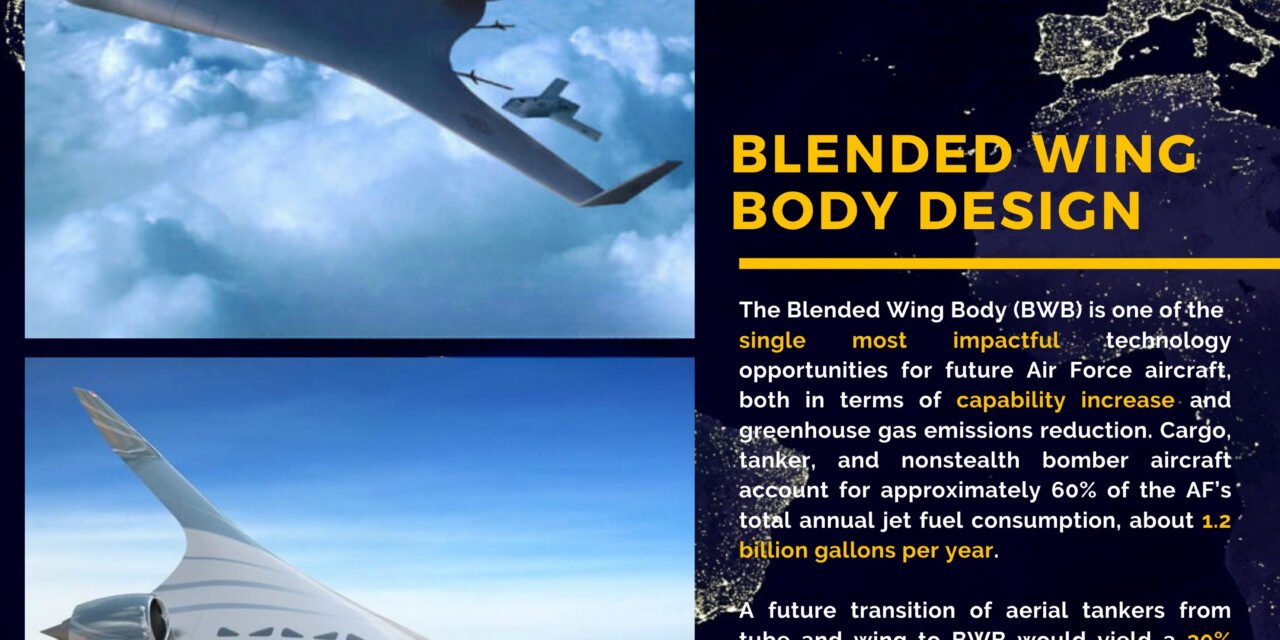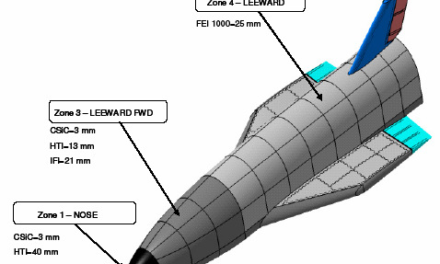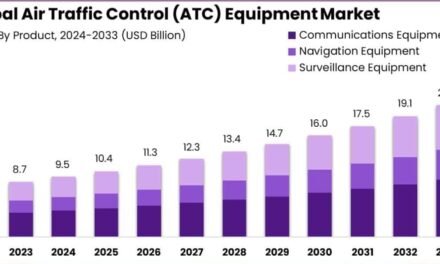Blended-wing body (BWB) designs play a significant role in reducing fuel consumption in aviation by offering a more aerodynamically efficient and lightweight alternative to traditional tube-and-wing aircraft configurations. This innovative design integrates the wings and fuselage into a single, seamless structure, enhancing lift-to-drag ratios, improving fuel efficiency, and enabling more sustainable aviation. Here’s how BWB designs contribute to reducing fuel consumption:
1. Improved Aerodynamics
1.1 Reduced Drag
- The blended-wing structure eliminates the sharp junctions between wings and fuselage found in traditional designs, reducing induced drag and form drag.
- A smoother, continuous surface allows for a more streamlined airflow, enhancing aerodynamic efficiency.
1.2 Higher Lift-to-Drag Ratio
- BWB aircraft generate more lift relative to the drag they produce.
- Impact:
- Less thrust is needed to overcome drag, leading to lower fuel consumption.
1.3 Laminar Flow Enhancement
- BWB designs are conducive to maintaining laminar airflow over a larger portion of the aircraft’s surface.
- Impact:
- Reduces skin friction drag, improving fuel efficiency.
2. Lower Structural Weight
2.1 Integrated Design
- The unified fuselage and wing structure distribute loads more evenly across the aircraft.
- Impact:
- Reduces the structural weight required for reinforcement, making the aircraft lighter.
2.2 Use of Advanced Materials
- BWB aircraft designs can incorporate lightweight composite materials (e.g., carbon fiber) to further reduce weight without compromising strength.
3. Fuel-Efficient Engines
3.1 Embedded Engines
- Engines in BWB designs can be integrated into the aircraft’s structure or mounted on top of the fuselage.
- Impact:
- Reduces engine noise and drag caused by external mounts.
- Improves propulsion efficiency.
3.2 Boundary Layer Ingestion (BLI)
- Some BWB concepts use engines that ingest part of the aircraft’s boundary layer airflow (air slowed by contact with the aircraft surface).
- Impact:
- Increases propulsion efficiency and reduces fuel consumption.
4. Increased Payload and Passenger Capacity
- The wider fuselage of BWB designs allows for larger cabin space and higher payload capacity without increasing drag.
- Impact:
- Improves the fuel efficiency per passenger or per unit of cargo compared to conventional aircraft.
5. Adaptability to Sustainable Technologies
5.1 Hydrogen and Electric Propulsion
- The spacious interior and distributed load-bearing capacity of BWB designs make them ideal for housing hydrogen tanks, fuel cells, or large battery packs.
- Impact:
- Enables the integration of alternative propulsion systems that further reduce aviation’s carbon footprint.
5.2 Solar Panel Integration
- The large surface area of a BWB aircraft can support the installation of solar panels to supplement power generation.
6. Longer Range and Reduced Fuel Burn
- Extended Range:
- Enhanced aerodynamic efficiency and reduced weight allow BWB aircraft to fly longer distances on the same amount of fuel.
- Fuel Burn Reduction:
- Studies and prototypes suggest BWB designs can achieve 20–30% reductions in fuel burn compared to traditional tube-and-wing designs.
7. Examples of BWB Projects
7.1 NASA X-48
- A scaled-down BWB prototype developed by NASA and Boeing to study aerodynamic benefits.
- Demonstrated significant improvements in fuel efficiency during flight tests.
7.2 Airbus ZEROe
- Airbus’ concept for hydrogen-powered aircraft includes a potential BWB design, highlighting its suitability for sustainable aviation.
7.3 Flying-V
- A concept developed by TU Delft and KLM that combines a BWB design with fuel-efficient aerodynamics to reduce fuel consumption by up to 20%.
7.4 Northrop Grumman B-2 Spirit
- While primarily a military stealth bomber, the B-2 Spirit demonstrates the aerodynamic advantages of a blended-wing configuration.
8. Challenges in BWB Implementation
- Passenger Experience:
- Wider cabins may create challenges in passenger comfort, such as uneven pressure distribution or window placement.
- Manufacturing Complexity:
- Building a BWB aircraft requires new manufacturing techniques and facilities.
- Certification and Regulation:
- Current certification processes are optimized for traditional designs, creating hurdles for innovative configurations.
- Pilot Training:
- BWB designs may require retraining pilots due to different handling characteristics.
9. Future Potential
- Commercial Adoption:
- With continued advancements in materials, propulsion systems, and aerodynamics, BWB designs could be adopted for commercial use within the next few decades.
- Environmental Impact:
- BWB aircraft could significantly contribute to achieving aviation’s net-zero emissions goals by 2050, especially when paired with alternative fuels or electric propulsion.
Conclusion
Blended-wing body (BWB) designs are a game-changing innovation in aviation, offering the potential for dramatic reductions in fuel consumption and emissions. By improving aerodynamic efficiency, reducing structural weight, and enabling the integration of sustainable propulsion technologies, BWB designs could become a cornerstone of sustainable aviation in the future. While challenges remain, ongoing research and development are paving the way for their commercial viability.
Hashtags
#BlendedWingBody #BWBAircraftDesign #InnovativeAircraftShapes #NextGenAircraftDesigns #BWBInnovation #FuelEfficiency #FuelEfficientAircraft #EcoFriendlyFlightDesigns #ReducedFuelConsumption #SustainableAviationTech #EnergyEfficientAviation #AerodynamicAdvantages #AdvancedAerodynamics #OptimizedFlightPerformance #DragReductionTech #SmartAerodynamicDesigns #EfficientFlightDynamics













